Old site of the former Kakuchi School
This picture shows the plaque with the name of the school on it, which has been displayed at the entrance of the Kakuchi School since it was built.
I pressed the shutter without thinking carefully, so please forgive me if the reflection makes it hard to see.
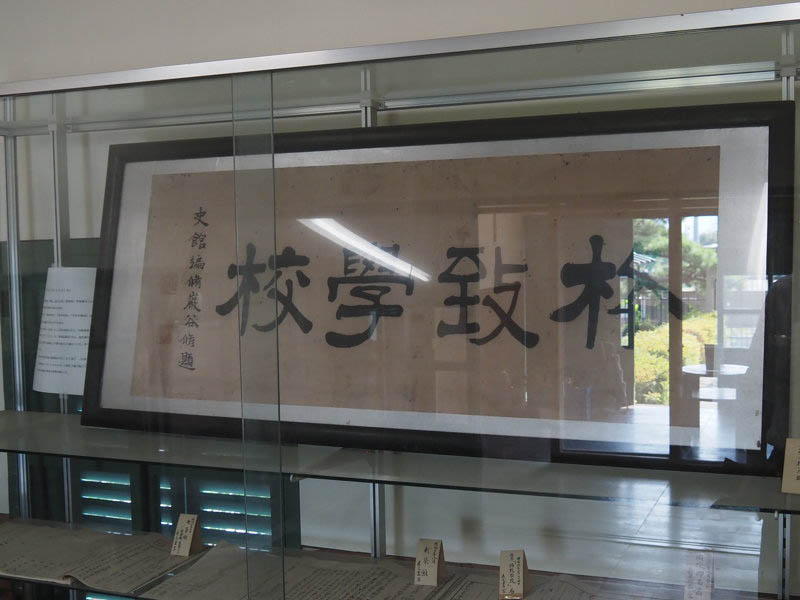
The name “Kakuchi” is taken from the Chinese classic “Daigaku” (The Great Learning), which says, “Kakubutsu-chichi". It means “to master the reasonableness of things and perfect one’s knowledge".
The calligraphy was written by Shu Iwaya. As a calligrapher, he was known as “Ichiroku Iwaya" and was said to be one of the “Three Brushes of the Meiji Era2. The writer and children’s author Sazanami Iwaya is the son of Shu Iwaya.
This time, I plan to visit the site where Kakuchi School was originally built to see what it looks like now.
The former Kakuchi School was closed in March 1962. (The name of the school at the time of closing was Nakanojo Branch of Sakaki Junior High School.)
The school building had been damaged while not in use, but there was a campaign to preserve it, and in 1971 it was designated as a Sakaki Town Tangible Cultural Property, and then in 1976 it was designated a Nagano Prefecture Treasure.
In 1982, the school was relocated and restored, and the work was completed in March 1983.
Then, in July 1983, the Kakuchi School Preservation Society erected a monument on the old site of the school.
This time, I am going to look for it.
A photo of the monument can be found in the “Report on the Relocation and Restoration of the Prefectural Treasure, the former Kakuchi School Building", so I already know what it looks like. All I have to do now is to check the site.
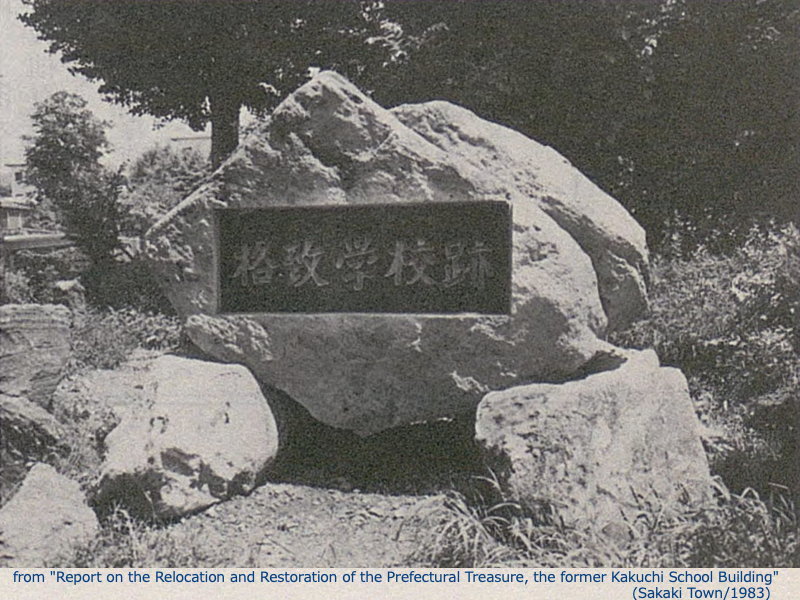
This map was used in a previous article, but I am re-posting it here.
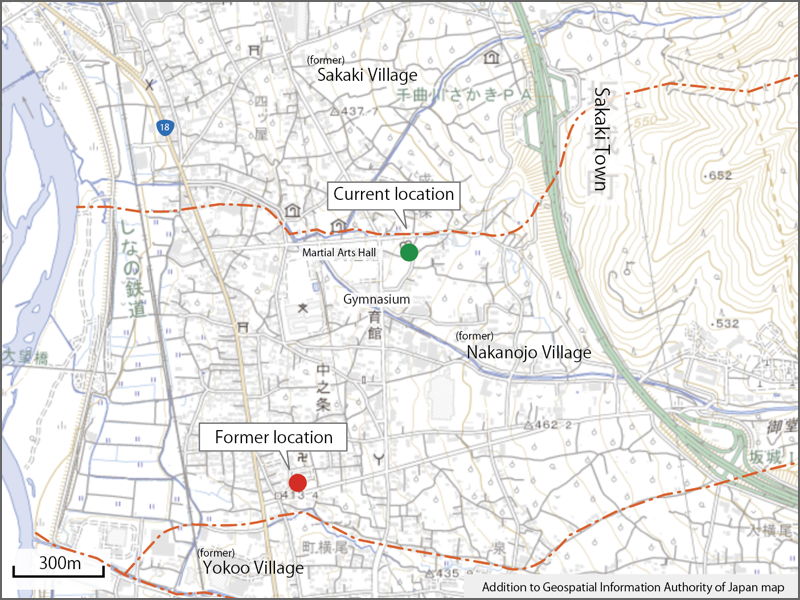
First, let’s look at the aerial photo of the area pointed in red circle.
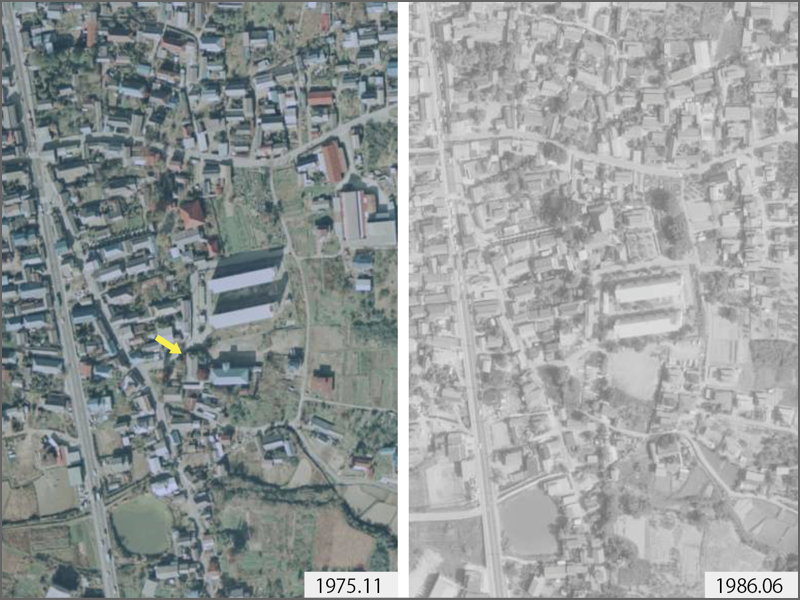
The building indicated by the yellow arrow in the 1975 aerial photo is the main building of the former Kakuchi School. At that time, more than a decade had already passed since the school was closed. It was when the preservation was decided and the building was designated as a town cultural property, a fence was built to prevent damage, and corrugated iron sheets were put up to protect the walls.
The two rather large buildings to the north of the schoolhouse are apartment houses.
The relocation work was completed in March 1983, so the site of the schoolhouse appears to be vacant in the 1986 photo. As mentioned above, the monument was erected in 1983, so probably the stone monument was erected in the area where the old school building stood.
However, recent aerial photographs show that the situation has changed.
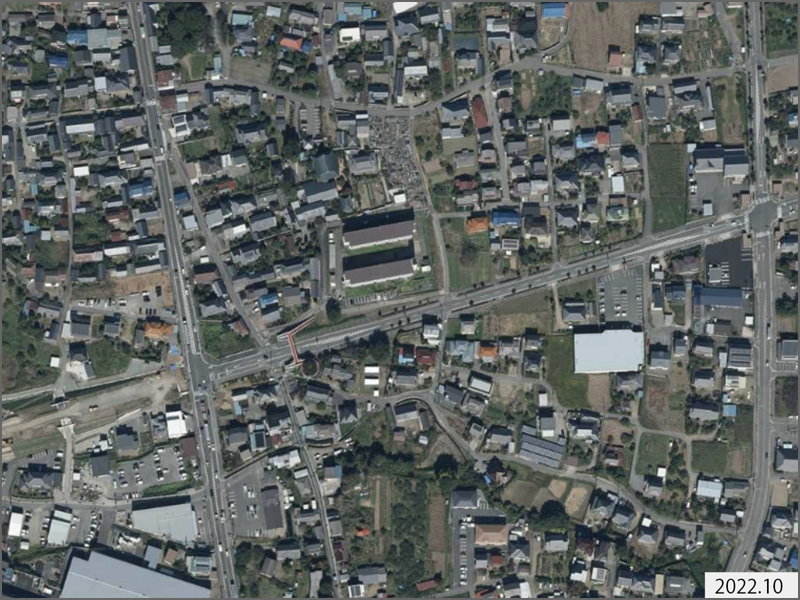
A road has been opened on the site of the old school building from east to west.
This road was opened in 1993 as a prefectural road connecting the Sakaki Interchange on the Joshinetsu Expressway and National Route 18 (The name is Prefectural Route 91 Sakaki Interchange Line).
As of 2022, the road was open up to Route 18, but is now open a bit further west.
I do not know exactly where the monument was built, but it is probably where the old school building was located. Aerial photos show that it has been turned into a road.
Now, I wonder if the monument is still there…
I have reached my destination.
I am standing on the sidewalk of Prefectural Route 91, facing west.
Behind the pedestrian bridge, where the cars are stopped, is the intersection with Route 18.
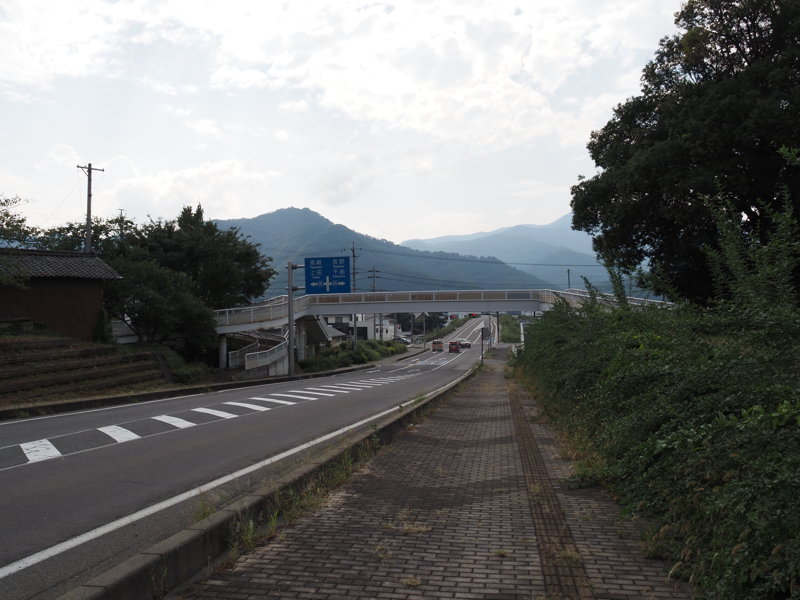
After all, has the site of the school building been turned into a road?
I crossed the road and came to the sidewalk on the south side.
There are trees on the left side, which seems to be something.
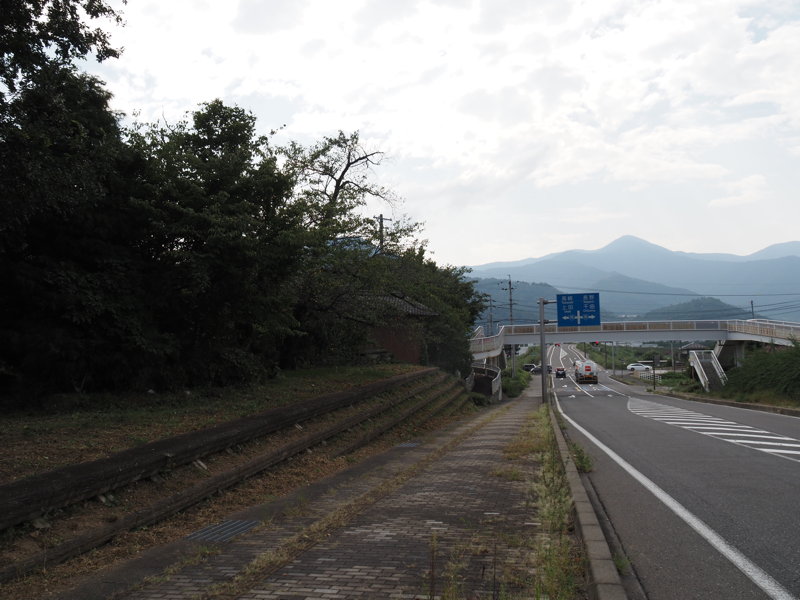
I found some stone monuments. It looks like there are two.
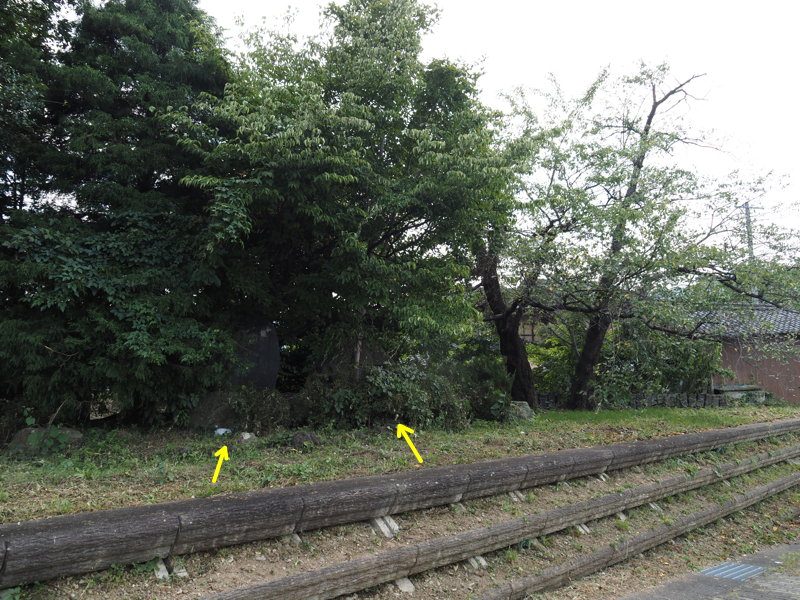
Climbed up on the platform to check the stone monuments.
The one on the left reads, “Monument to Kei Nishizawa,” and was erected in 1958.
A quick reading of the back of the monument reveals that he was born in Nakanojo Village and used to be a reporter for the Shinano Mainichi Newspaper.
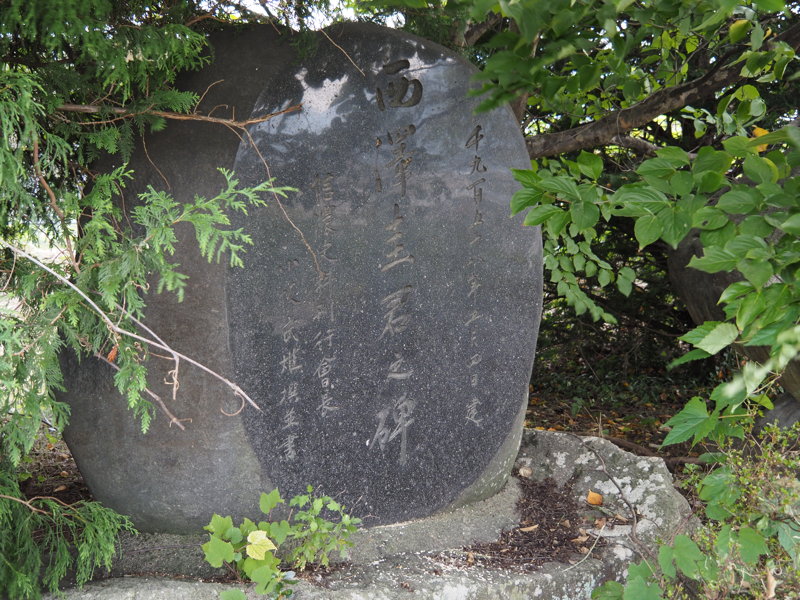
A search on the Ueda area library website turned up his name as the author of “Shinano 2,600 Year History” (edited by Toshiki Imai / Shinano Mainichi Shinbunsha / published in February 1941). The editor-in-chief of the compilation committee was Toshiki Imai, who was then the head of the Literature Department of Tokyo Imperial University.
The book is available in the Digital Collections of the National Diet Library, so I looked through it a bit.
It was published to commemorate the “2600th Japanese imperial year” so it was a history(?) book in line with the wartime regime.
The last page of the book concludes, “The Imperial Rule Assistance Association is the cornerstone laid for the construction of a new Japan, and the Imperial Rule Assistance movement is the driving force to build a new life on that foundation stone".
Perhaps because he wrote these things, he left the Shinano Mainichi Shimbun due to a postwar decree banning him from public office. Later, when the Shinano Mainichi Shimbun started publishing “Shinano Shiryo” (Shinano Historical Materials), Nishizawa also participated in it.
Nishizawa died in 1956, then when the 12th volume of the “Shinano Siryo" was published in 1958, the Shinano Historical Materials Publication Society seems to have erected this monument.
However, my purpose is not the monument above, but this one.
The stone on the right is the monument at the site of Kakuchi School.
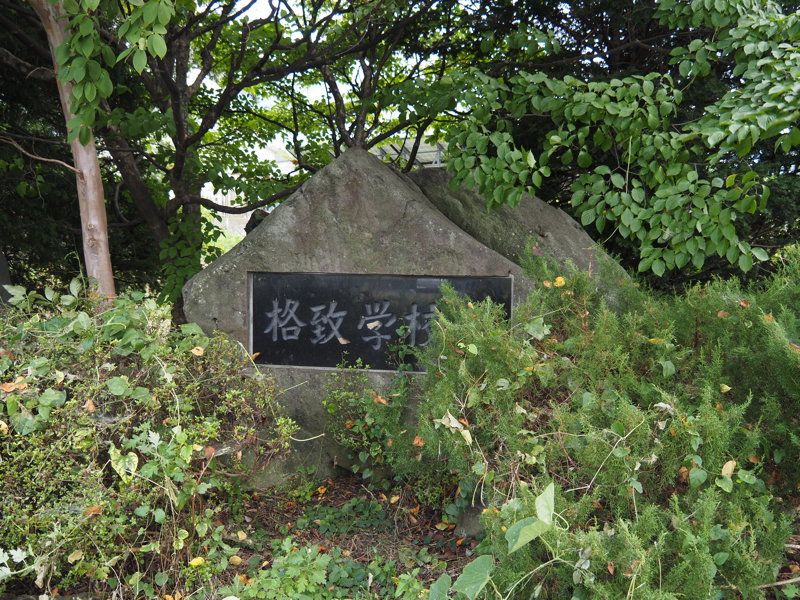
The bottom of the monument is hidden by trees, but it is the same as the one shown in the construction report.
I imagine that the location was probably moved slightly due to the road construction.
Let me quote from the description of the monument on the back.
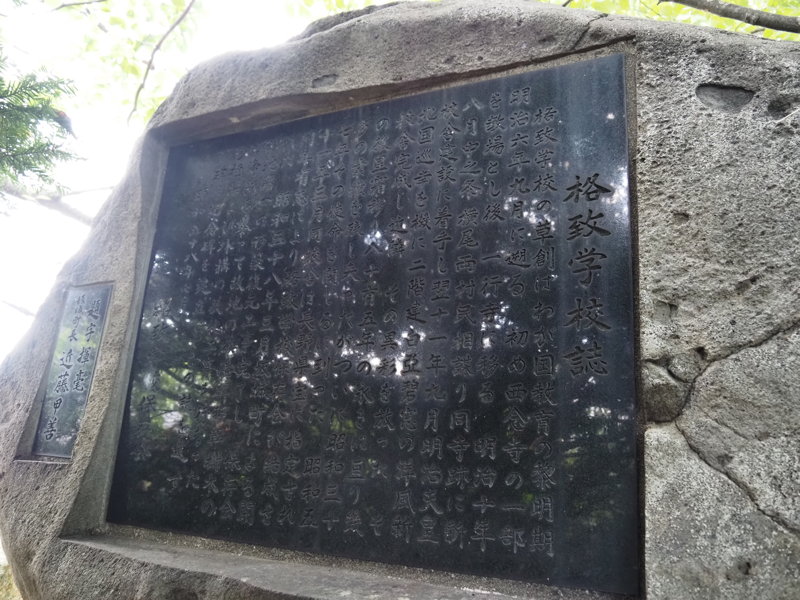
“History of Kakuchi School
The founding of Kakuchi School dates back to September, 1873, at the dawn of Japanese education. The school was first located in a part of Sainenji Temple and later moved to Ichigyo-ji Temple. In August 1877, the villagers of Nakanojo and Yoko planed to build a new school building on the temple site, and in September of the following year, as the time of the Emperor Meiji’s tour of northern Japan, the two-story Western-style school building with white plaster and blue windows was completed, giving the neighborhood a unique atmosphere.
Over the next 85 years, the school made many accomplishments, but finally closed its mission in 1962.
In March 1976, the school building was designated as a Nagano Prefecture treasure, and in the same year, the Kakuchi School Preservation Society was formed by volunteers. In March 1983, the town of Sakaki completed the restoration and relocation of the school to the Kaize area, and the Preservation Society raised funds to relocate the monument from the old school site, transplant trees, and beautify the exterior of the building.
A monument was erected to commemorate this event.
July, 1983
Kakuchi School Preservation Society"
The “relocation of the monument" above is probably referring to the “Monument of Zensaku Tsukada” which now stands next to the former Kakuchi School.
View of the old site of the former Kakuchi School from the pedestrian bridge. The apartment houses were built on what used to the schoolyard, so the school building must have been on the right side of it. I guess it was just in front of the tree.
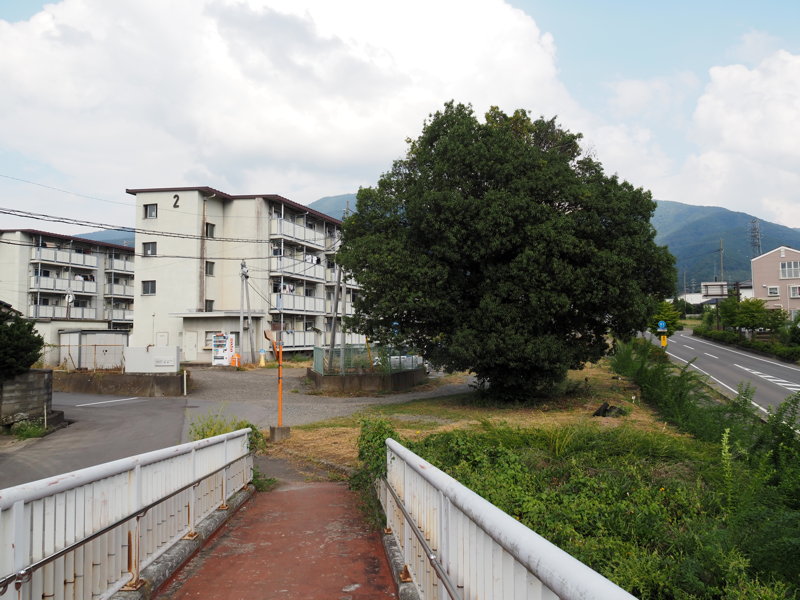
From the pedestrian bridge, I photographed the area where the monuments are located, but if you were passing by without knowing it, you would not notice the presence of the stone monument. And there seems to be nothing to indicate the existence of the school other than the monument.
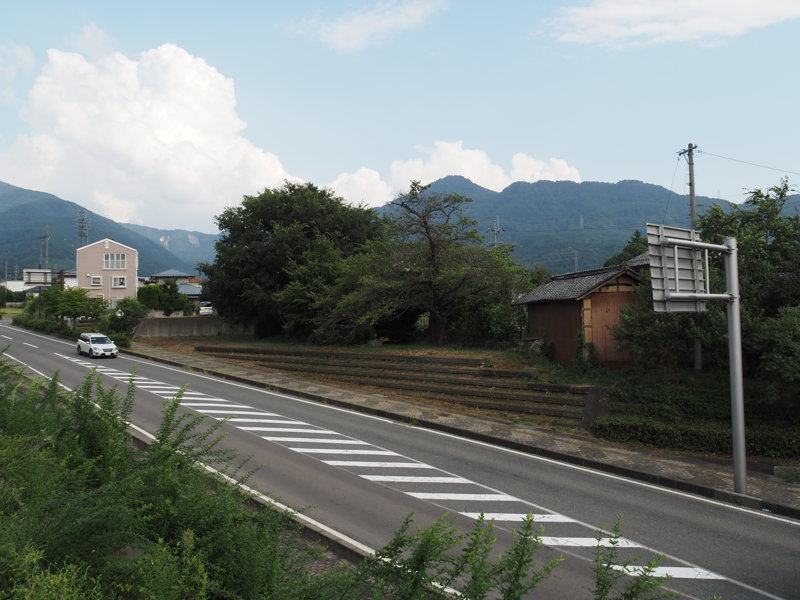
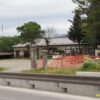
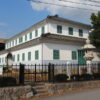
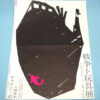
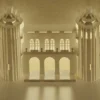
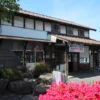
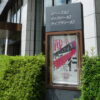
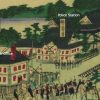
Discussion
New Comments
No comments yet. Be the first one!